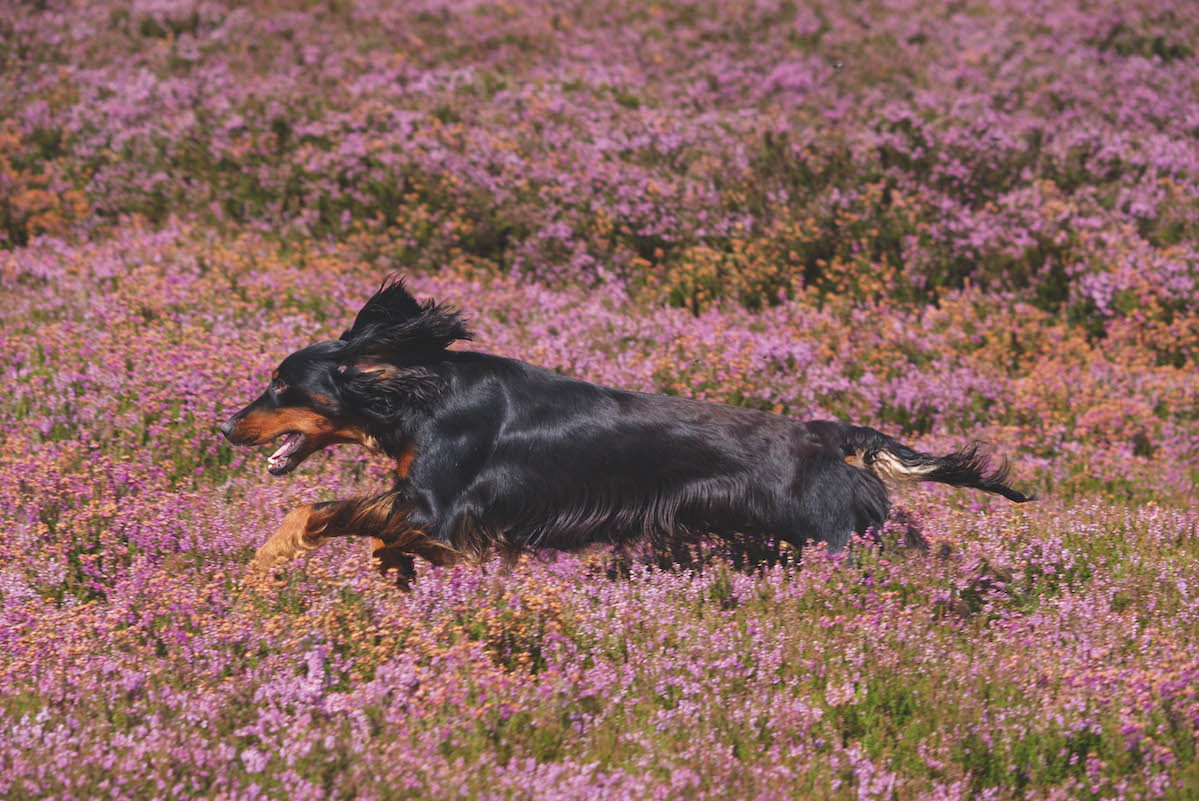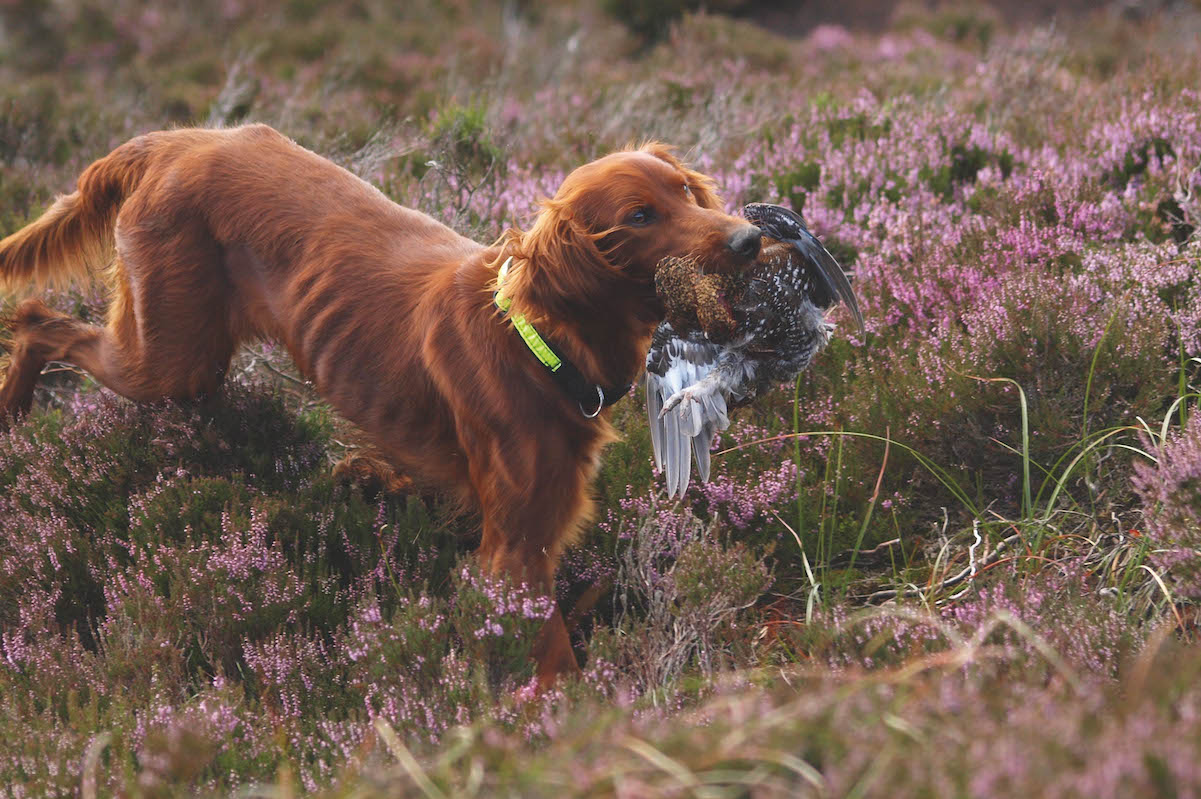Win CENS ProFlex DX5 earplugs worth £1,149 – enter here
Shooting over dogs and shooting with dogs: there’s a big difference
 (English) pointer: the classic grouse-moor dog
(English) pointer: the classic grouse-moor dog
Shooting with dogs
A few years ago, a friend of mine, a country solicitor, announced that he was going grouse shooting. Some of his pals had suggested that he might like to join them for a few days’ shooting in Sutherland. Though he enjoys the occasional day’s shooting, using the English side-by-side he inherited from his father, he isn’t what you would call a committed shooting man. This explains why he was vague about the sort of grouse shooting he had committed to, though he did say that it wasn’t driven, and he thought it was shooting over dogs.
I saw him a few weeks after his return from Scotland. Sadly, the shooting wasn’t what he had expected. He had imagined that he would be shooting over pointers or setters on beautiful heather-clad hills. The reality was that he was walking-up grouse on forestry ground that had been deep-ploughed in preparation for tree planting. Dogs? Two wild springer spaniels that flushed the few birds they found far out of range. He did add that if he could have a pound for every midge that had nibbled him, he would be a very wealthy man. However, nothing would persuade him to go after grouse again.
I tell this story as a reminder that grouse shooting can be hard work, while it’s essential for would-be shooters to appreciate the difference between shooting over dogs and shooting with dogs. The latter is walked-up shooting, usually accompanied by spaniels, while the former is the far more refined sport of shooting birds over pointers or setters. Walked-up grouse shooting can appear highly affordable, but that’s usually because there are few grouse on the ground, and getting a shot at them invariably requires miles of yomping through treacherous bogs and deep heather, often with a great deal of mountain climbing thrown in.

Irish setters are a treat to watch as they range over heather moorland – and many will retrieve too
Watching the dog hunt
Shooting over pointing dogs is a far more civilised pastime, but appreciably more expensive. Unlike trials, when dogs are always run two at a time as a brace, it’s normal to run a dog singly in order to conserve energy. The handler casts the dog off, and it then hunts a wide beat. Much of the pleasure comes from watching the dog hunt. As a Gun you observe with your weapon unloaded. Only when the dog comes on point do you load, and you then approach the pointing dog in the hope of a shot. To my mind, it’s the purest shooting sport there is, while the success of the day depends on the skill of the handler and the ability of the dog.
In theory, it sounds easy, but many things can and do go wrong. Inexperienced dogs may point pipits or larks rather than grouse, while some become sticky on point, and reluctant to flush the bird or birds they have found. The birds themselves don’t always behave as required, flushing prematurely before the Gun is in position. As the season progresses, grouse become increasingly wary and difficult to hold, so few people venture out with pointers after mid-September.
The weather also plays a vital role. Low cloud may mean that the hunting dog disappears from view, while heavy rain or even an early sleet shower can make the day a test of endurance. Lost dogs can also be a problem: if a wide-ranging pointer locks on to a covey in dead ground where it can’t be seen, it can take a long time to find it.
Modern technology plays a vital role here, as an electronic collar will tell you what your dog is doing, bleeping every few seconds when it is running, then changing to an automatic double bleep when the dog is on point. Telemetry, as used with hawks and falcons, can also help the handler locate a lost dog and can be an invaluable tool on certain ground.
Continental breeds
Traditionally, English pointers and setters have been favoured for work on the grouse moors, but continental pointing breeds can be as effective. (Read why do dogs point?)
They tend to work closer to their handler than our native breeds; they may not be as spectacular to watch, but the fact that they do not range so far means that there’s usually less distance to walk to the point, something that many Guns appreciate. I have also heard it argued that on moors with dense populations of grouse, an HPR is a better bet than a setter or pointer, as with so many birds you don’t need a wide-ranging dog.
HPRs also have one great advantage over our native breeds, as they will also retrieve the shot birds. I recall Roy Bebbington, a Hungarian wirehaired vizsla enthusiast who works his dog on grouse, telling me he insists on his dogs having a retrieve after their first hunt and point, as their reward for the work they have done. Traditionally, pointers and setters were never asked to retrieve, as it was thought it might make them unsteady, but in recent years there’s been a growing trend for these dogs to be trained to retrieve. Most do so with enthusiasm. If your pointer or setter is an effective retriever, there’s no reason to also bring out a labrador or spaniel, unless, of course, you have one that would enjoy the outing.
Related Articles
Get the latest news delivered direct to your door
Subscribe to Shooting Times & Country
Discover the ultimate companion for field sports enthusiasts with Shooting Times & Country Magazine, the UK’s leading weekly publication that has been at the forefront of shooting culture since 1882. Subscribers gain access to expert tips, comprehensive gear reviews, seasonal advice and a vibrant community of like-minded shooters.
Save on shop price when you subscribe with weekly issues featuring in-depth articles on gundog training, exclusive member offers and access to the digital back issue library. A Shooting Times & Country subscription is more than a magazine, don’t just read about the countryside; immerse yourself in its most authoritative and engaging publication.







